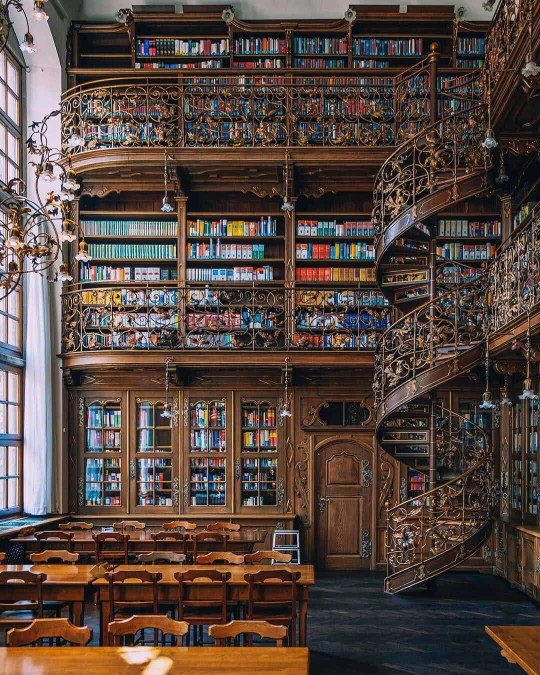#Marienplatz Library
Text

📍Neues Rathaus, Marienplatz, München, Germany
#dark academia#light academia#classical#academia aesthetic#escapism#academia#books and libraries#classic literature#books#architecture#building#exterior#places#Neues Rathaus#Marienplatz#München#munich#germany#travel#photography#royal core#cottage core#aesthetic#mood#vibe#tumblr
115 notes
·
View notes
Photo
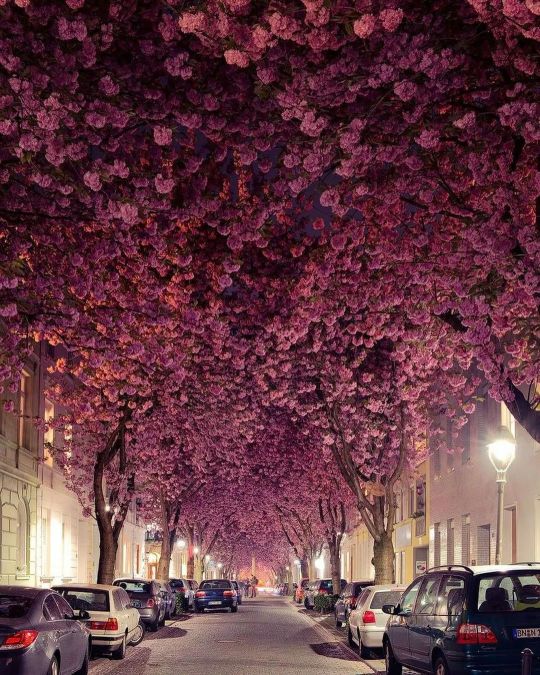
Places in Germany 🇩🇪 ❤ 🇩🇪 Locations below 1. Bonn by @andredistel 2. Bremen by @eskimo 3. Beilstein by @butnomatter.theroadislife 4. Juristische Bibliothek im Rathaus in Marienplatz By @themodernleper For the book lovers. 📚 A different picture of this library got a lot of attention last year and gave me a little taste of what 'going viral‘ means. A least in my little world. Glad that you liked it and thanks for sharing! Obviously Munich's Municipal Law Library is one of the most beautiful libraries i‘ve ever seen. The rather small library is located within the city’s New Town Hall, which was built between 1867 and 1908 and is supposed to resemble a bright warm forest. 5. Oevenum on Föhr by @themodernleper 6. Würzburg by @lettersoftravel magnificent view of the domes and towers of the old town 7. Rothenburg on Dertauber, medieval street by @voyageblonde 8. Lüneburg by @eskimo 9. Bremen by @eskimo 10. Regensburg, Bayern - fairytale path by @konstikowa #Germany #germany🇩🇪 #germanytourism #ig_germany #placestovisit #theprettycities #visiting #travelinspiration #travelphoto #amazingdestination #europetravel #igersgermany #madeingermany #lostplacesgermany #germanytravel #germanytrip #germanysworld #germanytoday #germanylife #germanyphotography #lovegermany #vanlifegermany #vegangermany #germany_insta #berlingermany Follow us ❤️👉🏻 @rare_picture_ Follow us ❤️👉🏻 @rare_picture_ Follow us ❤️👉🏻 @rare_picture_ Follow us ❤️👉🏻 @rare_picture_ Follow us ❤️👉🏻 @rare_picture_ Follow us ❤️👉🏻 @rare_picture_ Follow us ❤️👉🏻 @rare_picture_ Follow us ❤️👉🏻 @rare_picture_ Follow us ❤️👉🏻 @rare_picture_ Follow us ❤️👉🏻 @rare_picture_ (at Germany) https://www.instagram.com/p/CgR7Y0lsrEl/?igshid=NGJjMDIxMWI=
#germany#germany🇩🇪#germanytourism#ig_germany#placestovisit#theprettycities#visiting#travelinspiration#travelphoto#amazingdestination#europetravel#igersgermany#madeingermany#lostplacesgermany#germanytravel#germanytrip#germanysworld#germanytoday#germanylife#germanyphotography#lovegermany#vanlifegermany#vegangermany#germany_insta#berlingermany
0 notes
Photo

Wall inscription reading "Nieder mit Hitler" ["Down with Hitler"] on the facade of Munich's university library on Ludwigstraße, probably taken by the Gestapo, February 1943 (photographer unknown, digitally reworked) [Weiße Rose Stiftung e.V., München]
«The group of friends experiments with other ways of expressing their opposition as well: Hans Scholl, Alexander Schmorell and Willi Graf paint slogans of freedom on walls across Munich during three nights in February 1943. Alexander Schmorell has fabricated a stencil (25 x 15 cm) for the purpose and the slogans are painted with black tar coal. They write "Freedom" and "Down with Hitler" in large letters on the entrance to the university several times on 04 and 09 February 1943. The slogan "Mass murderer Hitler" and crossed-out swastikas appear on buildings around the central areas of Marienplatz and Viktualienmarkt on 16 February. The slogans are applied to about 30 different facades. The Gestapo has them removed immediately, but not always entirely successfully.» – From the Weiße Rose Stiftung e.V. website
«In the warm springlike days of early February after the Battle of Stalingrad I was riding in a commuter train from Munich to Solln. Next to me in the railway compartment sat two Party members who were discussing in whispers the latest news from Munich. "Down With Hitler!" had been painted in large white letters on the university walls. Leaflets calling for resistance to the regime had been scattered, and the city had been shaken as if by an earthquake.» – Inge Scholl, (1952), The White Rose. Munich 1942-1943, With an Introduction by Dorothee Sölle, Translated from the German by Arthur R. Schultz, Wesleyan University Press, Middletown, CT, 1983, p. 3
«In the early morning hours of the same day [February 4, 1943], Hans Scholl and Alexander Schmorell painted their first slogans—"Freedom" and "Down with Hitler"—on the walls of Munich's university quarter. [...] After Stalingrad debacle, he [Willi Graf] also joined Hans Scholl and Alexander Schmorell in their nocturnal efforts to mobilize the student population by daubing the walls on the university quarter with slogans ("Down with Hitler," "Freedom," etc.).» – At the heart of the White Rose. Letters and Diaries of Hans and Sophie Scholl, (1984), Edited by Inge Jens, Translated from German by J. Maxwell Brownjohn, Preface by Richard Gilman, Harper & Row, Publishers, New York, NY, 1987, p. 275 and p. 314n224
«Die im Stadtgebiet München am 4. 2. 1943 unter Beteiligung aller verfügbaren Stapo- und Kriminalbeamten und unter Einschaltung der Ordnungspolizei, Bahnpolizei usw. durchgeführte Grossfahndung nach dem im hiesigen Fernschreiben vom 5. 2. 1943 näher bezeichneten Flugzettelverteiler ist ergebnislos verlaufen. [...] Die Schmierereien "Nieder mit Hitler" und "Freiheit" sind neuerdings in der Nacht vom 8./9.2.1943 am Universitätsgebäude angebracht worden. Bei sämtlichen Schmierereien wurde die gleiche Ölfarbe‚ diesmal in Grün, verwendet, sodass bei beiden Schmierereien der oder die gleichen Täter am Werke waren. Die chemische Untersuchung der benützten Ölfarbe wurde veranlasst. Da es der oder die Täter offenbar gerade auf das Universitätsgebäude abgesehen haben, wurde dieses unter entsprechende Überwachung gestellt.» – Rundschreiben der Staatspolizeileitstelle München an das Reichssicherheitshauptamt sowie an alle süddeutschen Staatspolizeileitstellen vom 11. Februar 1943 (text here) [Bundesarchiv, Coblenza]
#graphic design#book#weiße rose#sophie scholl#hans scholl#willi graf#alexander schmorell#kurt huber#christoph probst#inge scholl#inge jens#arthur r. schultz#j. maxwell brownjohn#richard gilman#wesleyan university press#harper & row#bundesarchiv#weiße rose stiftung#1940s#1950s#1980s
15 notes
·
View notes
Text
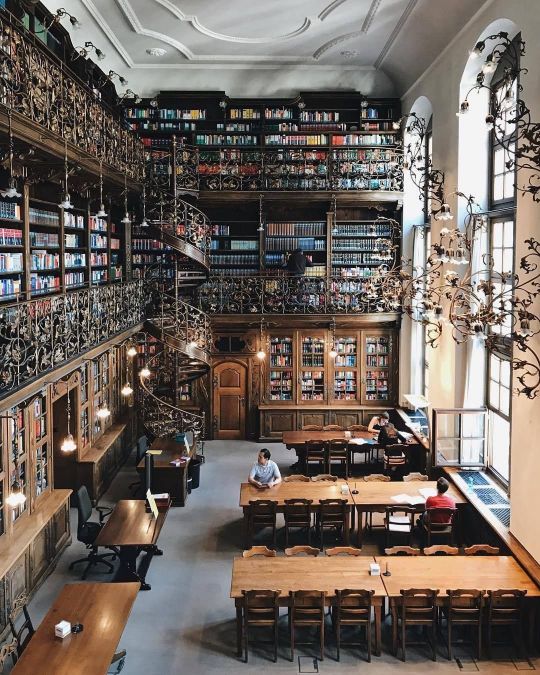
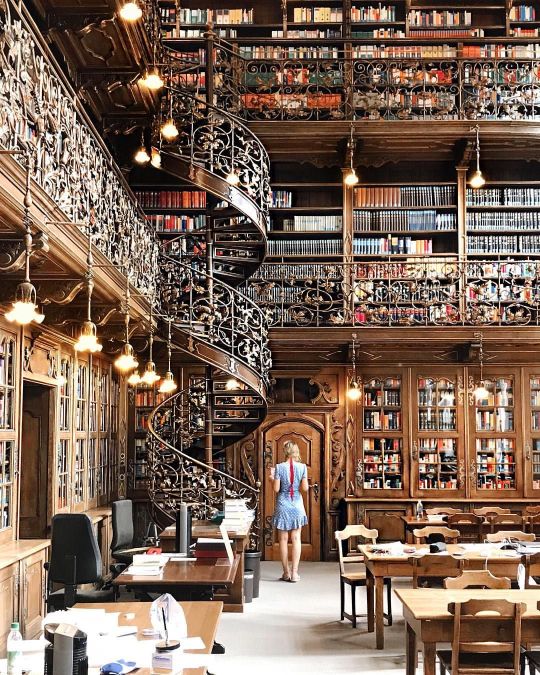
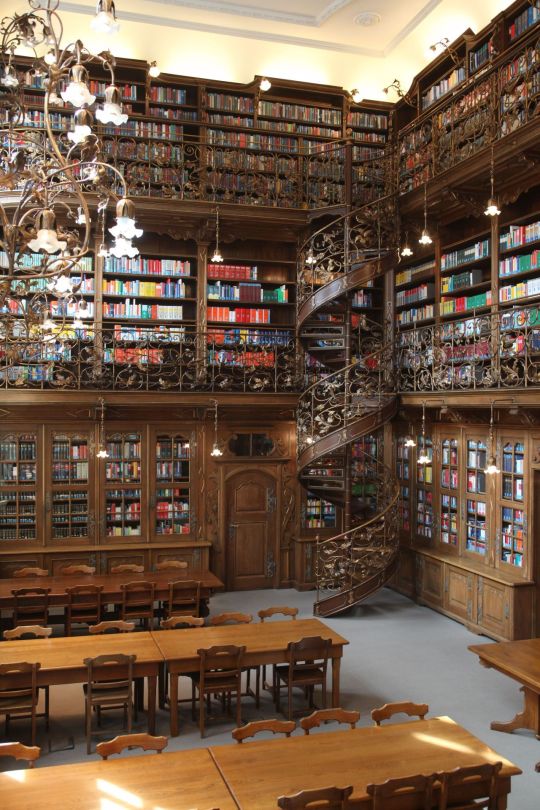
Juristische Bibliothek, Munich, Germany.
From the library website:
"The Legal Library is one of the most beautiful libraries in Munich. Founded in 1843, in 1906 it moved into the two-story reading room in the new town hall on Marienplatz, which was splendidly designed by Georg von Hauberrisser.
The gilded, wrought-iron spiral staircases and surrounding balustrades, which reflect the floral Art Nouveau of Munich, are very impressive in the almost ten meter high hall. The special atmosphere of the legal library is also very much appreciated by cultural and specialist organizers. Together with cooperation partners, the library regularly invites you to readings, lectures and discussions."
#library#Munich#old books#books#booklr#bookstagram#architecture#Law#reading#Study#Room367#themahoganylibrary#Juristische Bibliothek
26 notes
·
View notes
Text
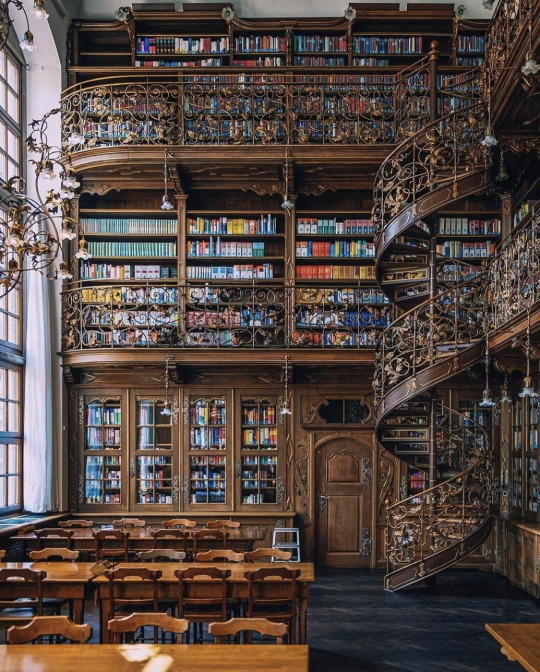
Marienplatz Library in Munich , Germany 📖
#tumblr#amazing#tumblrpost#loveit#tumblrgirl#lovely#greek tumblr#books#books & libraries#booksbooksbooks#libraries#bookaholic#bookadiction#booksnerd#literature#reading#bookish#bookaddict#art
20 notes
·
View notes
Photo
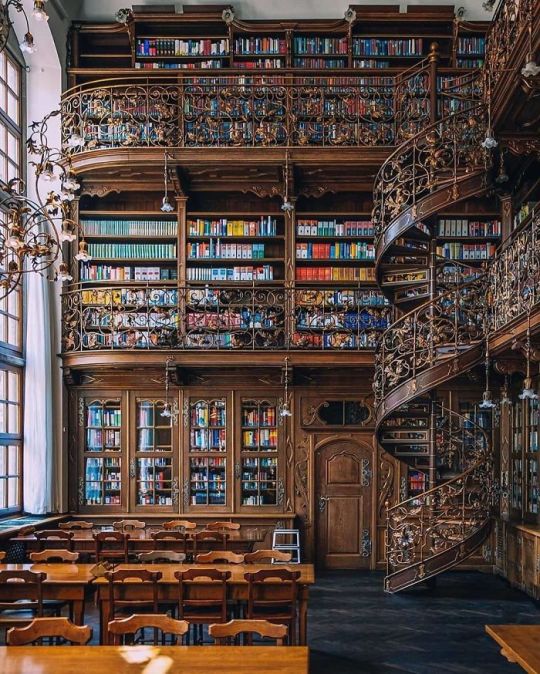
Marienplatz Library, Munich, Germany
16 notes
·
View notes
Text
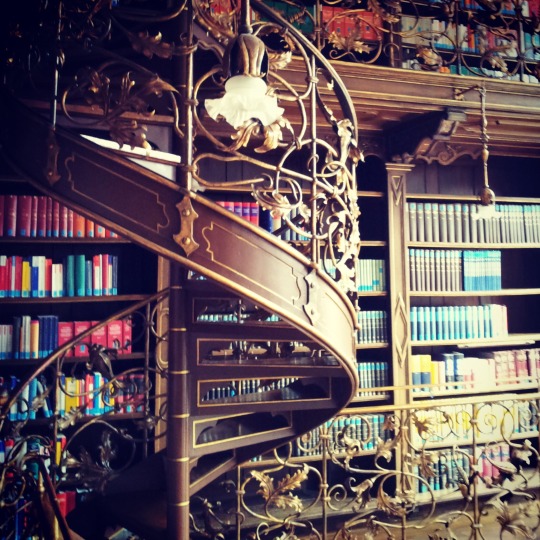
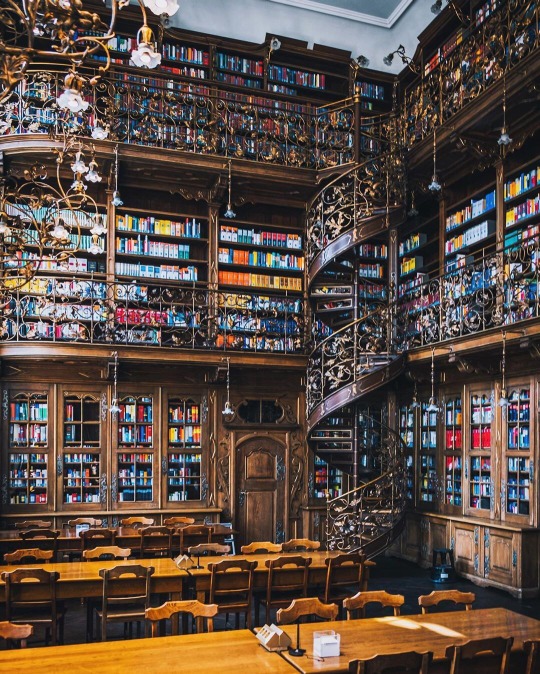
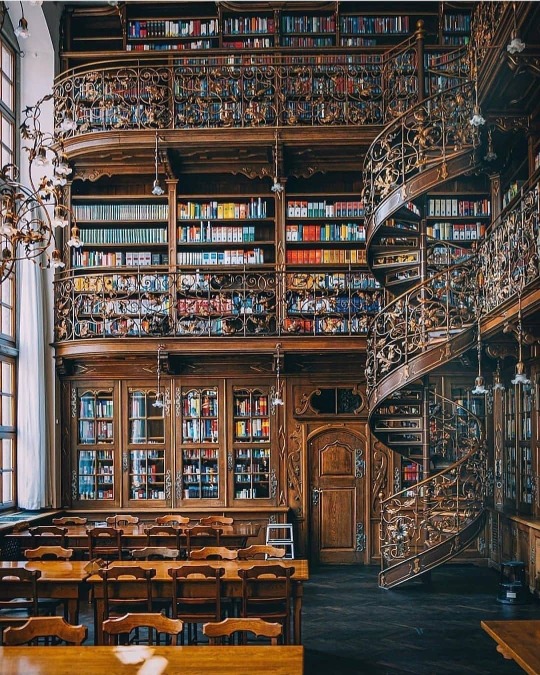
Munich Law Library / Juristische Bibliothek, work of architect Georg von Hauberrisser.
It is located on the third floor of the Munich City Hall / Mayor's Office in Marienplatz.
https://www.instagram.com/p/B9LvZddBI3a/?igshid=g6pdhacddb7p
77 notes
·
View notes
Photo

Marienplatz Library, Munich, Germany via https://ift.tt/3lxRFT0
2 notes
·
View notes
Text
Marienplatz Library, Munich, Germany.
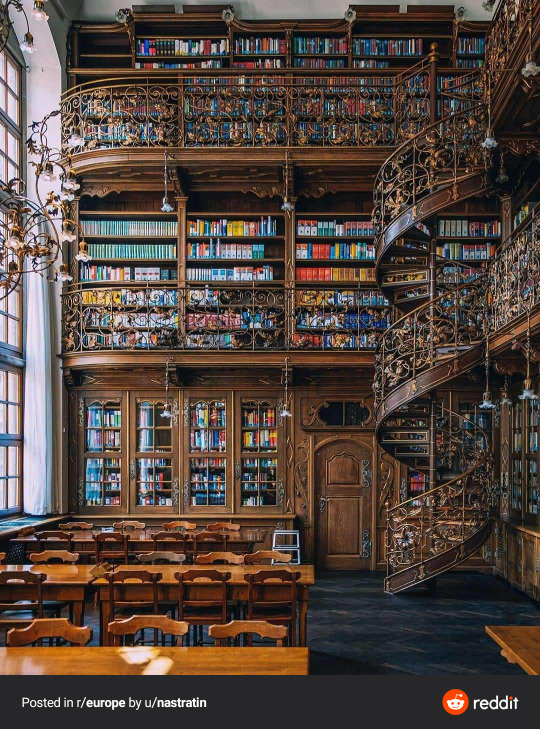
https://www.reddit.com/r/europe/comments/i1mu7m/marienplatz_library_munich_germany/?utm_medium=android_app&utm_source=share
0 notes
Text
Neues Rathaus, Architecture, Construction and Concept
Neues Rathaus, The New Town Hall is one of the most popular architectural designs in Bavaria. Its location in Munich is towards the northern part of the famous Marienplatz square. The hall hosts notable events such as council meetings and musical concerts.
Neues Rathaus is a rich detailed architectonical work, and you will have the best of time touring this great showplace. However, before you visit, there are many things you should know about Neues Rathaus.
Neues Rathaus Construction
Prior to the construction of Neues Rathaus, there was an Old Town Hall known as Altes Rathaus. Inadequate space in the Old Town Hall led to the construction of Neues Rathaus. After the decision to build a new town hall, Marienplatz was elected as the proper construction site.
Georg Hauberrisser supervised the design of the first building. The construction took place between 1867 and 1874. There was a need for subsequent expansion since the building could not contain the administration at that time. To get enough space for this new building, the administration had to buy properties around Dienerstrasse and Weinstrasse regions.
Georg Hauberrisser also designed Rathaus expansion in 1887. The latest design incorporated four complexes. This occupied the whole North side of the Marienplatz. Further constructions after this were the erection of a new tower, keystone construction, and repairs after World War II.
For the construction of Neues Rathaus, Georg Hauberrisser got his inspiration from the famous Brussel’s Rathausturm. Jan van Ruysbrieck, a belgium architect, was the mastermind of this design in 1449.
Building Concepts
Neues Rathaus contains construction material such as stones and bricks. The tower is one of the masterpieces of this building. Its height is about 85 meters; you can get there with the elevator designed to meet modern standards. Reaching the top is a complete fun, and tourists look forward to this. From there, you can enjoy magnificent sights of the Marienplatz and a great view of the whole of Munich city.
Before getting to the top, there is the 3rd floor of the building. This is the most important part of the Neues Rathaus. It has a very spacious area where most of the important events take place. Third-floor is also one of the most attractive parts of the building. The walls are adorned with beautiful designs and the original canvas of famous Munich artist, Carl Theodore Pilotis.
There is also another room in the building designated for the display of artworks. This room looks like a mini-museum. It has top-notch designs with art carvings and gems all around.
The second floor of the building is where you will find the Neues Rathaus library. It is a very big library with numerous book sections. Like every other part of the town hall, the library is well designed with quality materials.
Rathaus Glockenspiel Clock
This could arguably be the most interesting and famous feature of the Neues Rathaus. Located on the main building’s tower, the Rathaus Glockenspiel is a distinct feature of Neues Rathaus reconstruction.
People gather around the Neues Rathaus to watch the play performance of the clock every day. The Rathaus Glockenspiel display twice a day when it chimes at 11 am and 12 pm. These stories are ancestral tales from past centuries. Rathaus Glockenspiel has more than 40 bells and over 30 human-sized figures used for this display.
There are 2 halves of Rathaus Glockenspiel, each half its own story. The upper half displays a friendly battle in honor of the famous marriage of Duke Wilhelm V and Renata von Lothringen. There are 2 team battle knights of the human-size figures.. The first team with blue and white colors represent the Bavaria Knights. The second team in red and white colors represents the (bad guys) Lothringen Knights. At the end of the battle, the Bavarian knights are usually victorious.
The second chime commences the second display in the bottom half of Rathaus Glockenspiel. The story is about the traditional coopers’ dance in Munich. The dance is a culture that has been practiced for generations in Munich. The dance started as a result of a plague that affected the people of cooper from 1515 to 1517. Due to this, they invented this dance to help take their minds off fears from the plague. They believed that dancing helped them through this difficult period. Since then, they have performed it every seven years in the city of Munich. The next one is in 2026.
Each of these shows last a period of 12 to 15 minutes based on the sound scheduled for that particular day. To bring the show to an end, a large cock at the top of the Rathaus Glockenspiel would crow thrice.
Rathaus Glockenspiel Construction
Again, Georg Hauberrisser is the brain behind the design of Rathaus Glockenspiel. In fact, the idea of incorporating a clock into the Neues Rathaus building was his.
Karl Rosipal's first donation is for the first set of human-size figures to play performance. However, there is more to this. The administration decided that they do not want to have the participation of a Jewish man in the construction of the Rathaus Glockenspiel. Unfortunately because of the Jewish descendants, Karl's donation is being refunded to his family in 1934.
During World War II, Rathaus Glockenspiel got small damage. Hence, it's usage got casually in the ensuing years. During those periods, it underwent necessary repairs to bring it back to a better state.
The next repairs of the Rathaus Glockenspiel took place in 2007 prior to Munich’s 850th anniversary. They got rid of the bells and human-sized symbols, cleaned, and the bad ones got recovery. Also, other parts of the clock like the bell holder, springs and steels got new looks. This maintenance cost about 750,00 Euros, of which 650,000 Euros is donation from Munich’s citizens.. The German Foundation for Monument Protection (Deutsche Stiftung Denkmalschutz) gave the additional 100,000 Euros.
For the summer Olympics in 1972, the clock chimed at 12 pm and 5 pm instead of the normal time of 11 am and 12 pm.
The Night Watchman and The Guardian Angel
Another common tradition of the Neues Rathaus is the watchman. At night around 9 pm, a beam of light shines on the 2 sided window. The watchman always roams the left side. Dressed in a loose garment, he usually carries his lamp and horn.
In this period, Rathaus Glockenspiel plays some nice tunes. The first one is from the award-winning movie Die Meistersinger von Nuremberg. He then wraps it up with the lullaby song of Johannes Brahms. After this, the guardian angel returns to the tower, and then it’s time for light out in the Neues Rathaus. This is how the city of Munich is being put to bed by the New Town Hall every night.
The Rathaus Glockenspiel Gallery
Above the huge clock is the Rathausturm gallery which you can access with the lift. The gallery’s sight is astonishing, especially on a bright sunny day. Some of the beautiful views to enjoy include the Holy Spirit Church, the Talburtor, the whole of Marienplatz, St. Paul’s church, etc.
The Town Hall Facade
Town Hall St. Johann, the town hall facade, is a striking resemblance of the Neues Rathaus. Georg Hauberrisser is also responsible for the architectural design of the Town Hall Facade.
Since there was only 1 design for Town Hall St. Johann, it has a more balanced look than the Neues Rathaus whose construction spanned 3 periods. Hauberrisser combined various sections of buildings, with different heights, for the town hall facade. He made use of facade claddings and designs extension to come about this.
People are comparing the works from Hauberrisser with the ones from Friedrich von Schmidt, who is his teacher. Friedrich von Schmidt built Viennese Town Hall as well as its facade. Hauberrisser usage of various decorations, features, balconies, and claddings gave his designs more life and made them look intriguing.
His works were also linked to those of Zentralblatt der Bauverwaltung in Berlin. His creativity and how he designed the Town Halls to fit the city of Munich looked similar to the works of Zentralblatt der Bauverwaltung.
Neues Rathaus Reconstruction after WWII and the American Contribution
Neues Rathaus suffered damages during the airstrikes of World War II. After the war, there was a need for a rebuilding process. During this period, an additional floor rose upon the Neues Rathaus. Before the end of the 90s, the rebuilding process was fully completed with the help of American donations.
The windows design contains motifs from religion, cultural, international and regional background. Although these got torn apart towards the end of World War II, they were all restored during the reconstruction process.
Monuments in the Neues Rathaus
Neues Rathaus buildings statues are made from mainly bricks and limestone. Built on a landmass area of 9159 meters square, the whole building covers about 77% of this land area. The free areas are well decorated to meet the taste of the Neues Rathaus.
There are various monuments in the Neues Rathaus. Just in the middle of 2 complexes in the Marienplatz, there is a statue illustration of Prince Regent. Other monuments include those of the four earliest kings and founders Munich, a water fountain, and many other historical illustrations.
More Features of the Neues Rathaus
The rooms in the new town hall are 400. Behind the main building that faces the Marienplatz is a park known as Marienhof. Here, the basement is home to the famous Ratskeller restaurant. The restaurant is always busy with tourists trooping in and out every day.
The last floor has a lot of rooms rented out as shops to petty traders. This is where you can get your goods as a tourist. Also, this floor houses the visitor center office where you can make various tourist inquiries.
On the first floor, is probably the largest balcony you have ever seen. This place hosts elaborate events like concerts, award presentations, etc.
Events in Neues Rathaus
The Neues Rathaus hosts most of Munich’s major events. There are various rooms for this purpose. There is a conference room for events like the city council. The hall also houses various fragments of the city’s administration and also the Mayor’s office.
The Mayor’s office location is underneath the Rathaus Glockenspiel. Looking at the huge clock from this position is a very beautiful sight.
The town hall is also hosts musical concerts, award ceremonies, various kinds of receptions and sports team meetings.
Do you want more?
So there you have it. You are definitely in for a fun time in the Neues Rathaus. It is such a huge place, so you have to schedule the tour carefully. Don’t worry about that, with me you would have the best tour possible.
Finally, don’t forget to bring your cameras along, you can take amazing pictures here!
Related articles
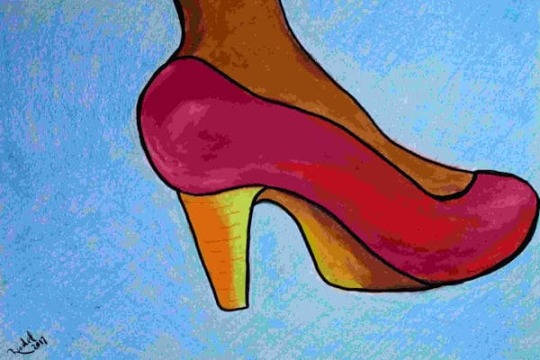
City tour in German
Paul's Beer and Food Event
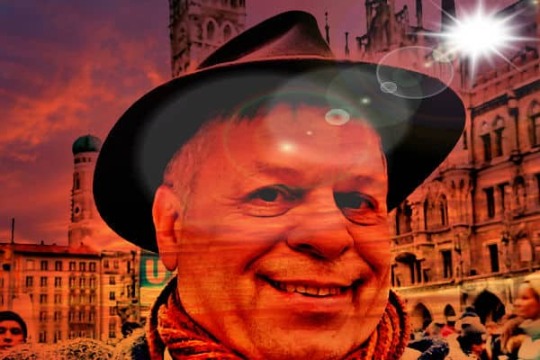
Walking Tour with Paul

Visit the Ratskeller
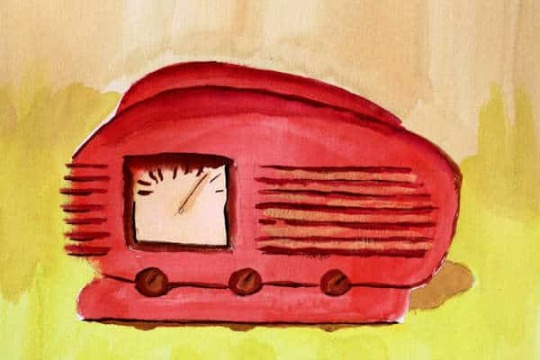
Visit Donisl
Read the full article
0 notes
Text
Going Out in Munich: Ratskeller
Visiting different bars and restaurants for my readers I was this week at Ratskeller. One of the places that possess something more on its own.
When I started my beer tour around Munich many years ago, I was aware that I could bump out on a lot of locations. Some of them perhaps have been amazing, some were odd but unique.
The location of this magnificent restaurant is one of a kind though. Direct under the new city Hall.
You can expect to find a restaurant in some large building with a couple of stories in it. But I know you couldn’t imagine one in a basement.
That’s where this bar actually is, but it will be more clear to you by continuing reading this.
Around the world are some Ratskeller
Germany
Ratskeller is a name in German-speaking countries for every facility that provides hospitality services. It is usually located in the basement of a city hall or nearby.
Many taverns, nightclubs, bars and similar establishments throughout the world use this terminology.
The word had been used in English since the mid-19th century. With at least one New York restaurant calling itself a ‘rathskeller’ in the 19th century, this term became standard in use.
One Ratskeller was one of the oldest wine cellars in Germany and it was a center of the wine trade. It was the Ratskeller in Bremen. But another one was popular in northern Germany.
There are other Ratskeller for instance in Lubeck. This one was one of the oldest ones in this part of the country with parts dating to the Romanesque era. The earliest documented use for wine storage dates to the year 1220.
North America
When it’s about America, their establishments tend to spell the word ‘Rathskeller’ to avoid similarity with the word rat.
One facility that has served Bavarian fare since 1894 was the former ‘Das Deutsche Haus’, Ratskeller restaurant in Indianapolis. Nowadays, this place is known as the ‘Athenaeum’.
Through the years of hard work and dedication, this place received historical landmark status.
Ratskeller in Boston has even more significance though. It was a famous rock and roll club from 1974 to 1997. So, it was an active place for rock bands for two full decades.
Here are performing some bands that are very popular today in the world of music. Bands like Metallica, The Police, The Pixies and The Cars were among the ones who performed here before they met glory. This place provided them a springboard for their future careers and achievements.
Nevertheless, The Minnesota State Capitol contains a rathskeller. This recently renovated and restored in 2017. But this place is complete since 1905. For the openiung, the Ratskeller contained 29 painted mottoes in German.
Also, it was home to a full-service restaurant. This is worth of admiration from my side.
Currently, the Ratskeller is home to a café serving legislators and the public.
How this bar had an influence on entire hospitality services in America telling us one great fact.
Many universities and public institutions have pubs and student centers located in re-purposed basements.
To market these non-traditional eating locations to students and patrons, many of these are termed Ratskeller or some variation thereupon. Some of them are Boston College, California Institute of Technology, Colorado State University and many others.
New Town Hall (Rathaus)
When we speak about the Ratskeller, it is hard not to mention a Rathaus.
The New Town Hall is a town hall at the northern part of Marienplatz in Munich. It hosts the city government including the city council, offices of the mayors and a small portion part of the administration.
In the year of 1874, the municipality had left the Old Town Hall for its new domicile.
Rathaus in Munich is pretty big if I may say. This complex of brick and shell limestone has 6 courtyards built on the area of nearly 9200 square meters. Of this whole space, the building covers 7115 square meters.
Luxury from the 19th century
What is noticeable is that almost 100 meters long main facade. This richly decorated side leads to Marienplatz. It shows Guelph Duke, Henry the Lion and almost the entire line of the ‘House of Wittelsbach’ rule in Bavaria.
Also, it is the most extensive Princely cycle at a German Town Hall.
The other catchy thing here is a statue of the Prince Regent Luitpold. It applies to a central monument in the middle of the main facade between the two building sections on the Marienplatz.
There are more interesting things to see on the main facade of the Marienplatz and on that of the Weinstrasse. You can find a Munich’s founders, Neo-gothic water fountains in the form of grimaces so as allegorical images too.
Themes from the life of saints and folk legends are also available.
Numerous glass windows with local, national and religious motifs adorn the building. During the final phase of World War II, most of the windows were destroyed, unfortunately.
But the light at the end of a tunnel is always present. I mean that because most of the objects could be restored to their original form with the help of donations.
Town Hall and its breathtaking view
As I already mentioned, the New Town Hall is the home of the Mayor and the city council which has its conference room here. The council factions and small parts of the city administration are accommodated too.
The library hall was built to accommodate the Council’s legal library and is still a publicly available library. It is under the administration of the Munich City Library.
Something that is really worth mentioning is that this town hall had been a part of sportsmen's and athlete's success. They were often honored for their sports achievements as the manifestation of giving medals was held here.
It is a special honor to look down upon the observers from the balcony of the Mayor’s office which is located in the ‘Rathausturm’ below the clock.
I know how this experience can be a huge privilege to every athlete and people from the world of sport. Just imagine that view from the balcony, like in some fairy tale right?
Also, the Rathausturm you can use the lift and visit the gallery with an woanderful view to Marienplatz. On a clear day, you can see the Alps, the church of Old Peter, the Marienplatz, the Holy Spirit Church and the Old Town Hall from there.
How astonishing is that?
In the north you see, the Theatinerkirche and Olympiaturm. In the west, you can see the Frauenkirche and St. Paul’s Church.
Above all the details there is the Glockenspiel, or the clock. The idea of integrating a clock chime into the tower of the Town Hall goes back to Georg von Hauberrisser.
The costs were substantial and the 43 bells cost 154000 gold-marks alone.
Karl Rosipal, an antique dealer, donated in 1904 32.000 marks for the furniture.
Rathskeller's service and food
I feel free to tell you what I have experienced here and what are my own impressions about this place.
Ratskeller is a great place to eat when you find yourself in Munich’s old town. From all the restaurants in Munich, this one like it has its own soul.
In the basement of the city hall, this restaurant is traditional in German cuisine and very nicely maintained.
I have come a couple of times. The first time I had a full meal but for my standards. As I am a vegetarian just imagine what full meal of mine looks like.
Ratskeller is also a big size.
The first time I was in a more formal part of the dining room with vaulted ceilings which felt mid-evil in nature. The meal was delicious and the service was topnotch.
My second visit this past September was during the season when Italian prunes are in season. It lends itself to a cake that I like to eat often. I was fortunate finding it here. It made different than the recipe I'm mused to. I had to get over that for a while.
Our server reminded me so much of one of my friends and she was really kind and motherly when tending to me. I enjoyed that pretty much I must admit because I like kind persons with visible warmth in their hearts.
Prices are a bit steep though. Ones, I came in on a Sunday evening without a reservation but they were able to accommodate me easily.
All in all, I spent really nice time on every visit so I hope that I can find myself here once again, this time with my husband!
Related Articles
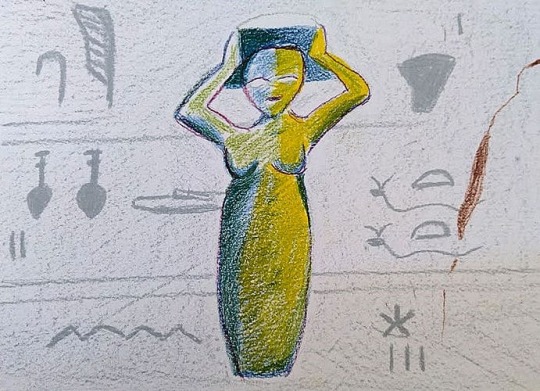
Paul's Bavarian Beer and Food Event

Bei Roy
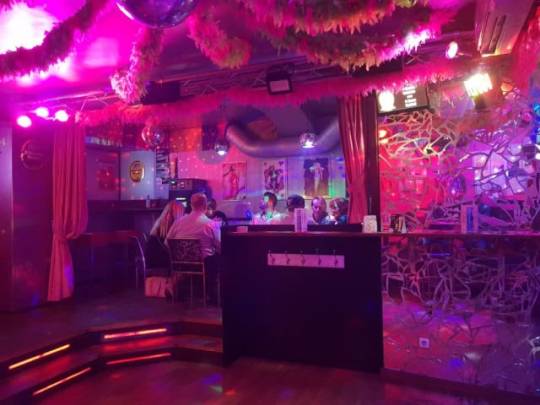
Gay Bars
Read the full article
0 notes
